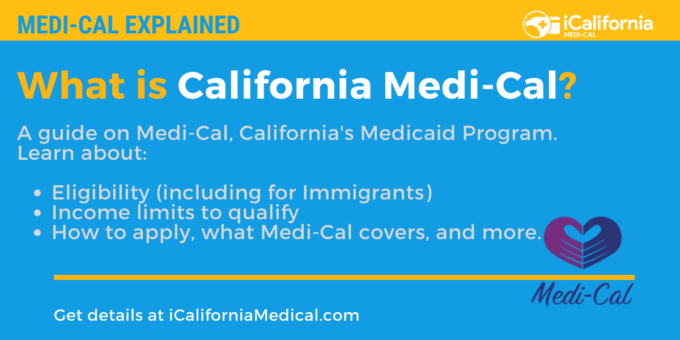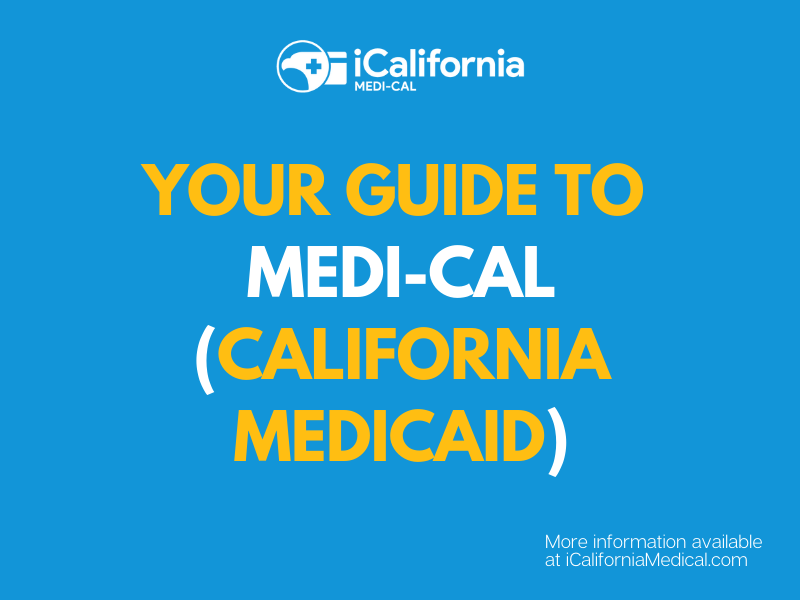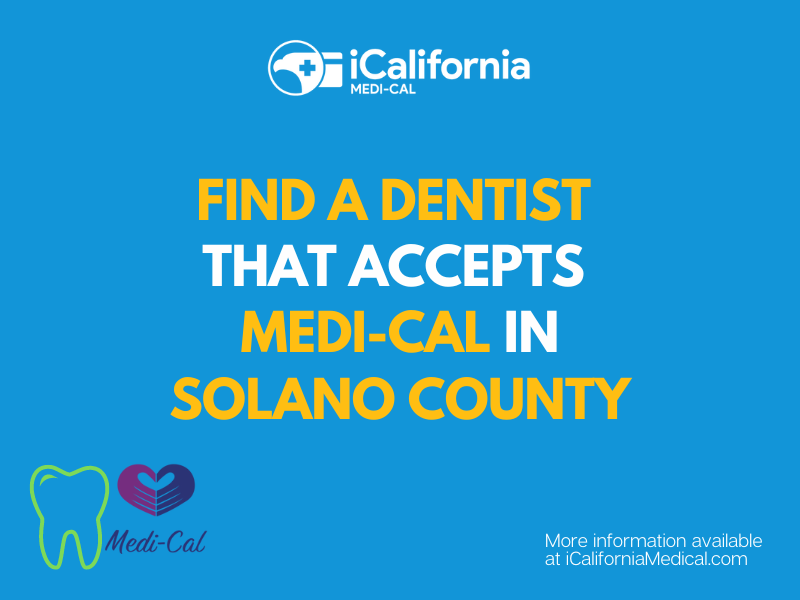Medi-Cal is California’s Medicaid program. California Medi-Cal provides free or low-cost medical services for children and adults with limited income. In this post, we are going to review everything you need to know about Medi-Cal to apply for benefits, including what is covered.
First, we will walk you through Medi-Cal and who is eligible, including income limits.
Second, we will provide details on the four ways you can apply for Medi-Cal.
Additionally, after you are approved for Medi-Cal, you are required to pick a Medi-Cal PCP in your county. We will walk you through that.
Lastly, we will answer the most frequently asked questions about Medi-Cal.
Table of Contents:
- What is Medi-Cal?
- Medi-Cal Expansion in California
- How Medi-Cal Health Insurance Works
- California Medi-Cal Eligibility
- Maximum Medi-Cal Income Limits for 2022
- How to Apply for Medi-Cal
- How to Choose a Medi-Cal Primary Care Provider in your County
- What does California Medi-Cal Cover?
- FAQs about California Medicaid

What is California Medi-Cal?
Medi-Cal provides medical services to low-income people at little or no cost, including:
- Adults
- Families with children
- Seniors
- Persons with disabilities
- Pregnant women
- Children in foster care
- Former foster youth up to age 26
Qualified people can enroll in Medi-Cal year-round.
Medi-Cal Expansion in California
Effective January 1, 2014, The Affordable Care Act (ACA) expanded Medicaid benefits to low-income, childless adults between the ages of 19-64 who meet the low or no income requirements.
Also, starting on January 1, 2020, a new law in California gave full-scope Medi-Cal to young adults under the age of 26, and immigration status does not matter.
This is referred to as the Young Adult Expansion. All other Medi-Cal eligibility rules, including income limits, will still apply.
Furthermore, beginning May 1, 2022, a new law in California will give full-scope Medi-Cal to adults 50 years of age or older and immigration status does not matter.
This is referred to as the Older Adult Expansion. All other Medi-Cal eligibility rules, including income limits, will still apply to this new group.
How Medi-Cal Health Insurance Works
There are two ways to receive Medi-Cal benefits in California:
Medi-Cal Plan administered directly by the State of California
This is usually referred to as Medi-Cal Fee-For-Service (FFS), regular or traditional Medi-Cal.
Medi-Cal Plans administered by third-party insurance Plan
These are Medi-Cal benefits administered by a third-party insurance plan that your county has chosen to administer those benefits for its residents.
This is referred to as Medi-Cal HMO, Managed Medi-Cal, or Medi-Cal Health Plans.
Typically, once you sign up for Medi-Cal, you are enrolled in a traditional Medi-Cal FFS plan for the first 30 days.
Within those first 30 days, you will be required to select a Managed Medi-Cal plan (Managed Care Plan).
After the first 30 days, the state transitions you to one of the Managed Medi-Cal plans available in your county.
Most counties in California are now using Managed Medi-Cal plans.
Medi-Cal California Eligibility
There are three ways you can qualify for Medi-Cal:
First, you can qualify if you meet the income limits.
To see if you qualify based on income, look at the chart below. Income numbers are based on your monthly or yearly earnings.
Second, you can also get Medi-Cal if you are:
- 65 or older
- Blind
- Disabled
- Under 21
- Pregnant
- In a skilled nursing or intermediate care home
- On refugee status for a limited time, depending on how long you have been in the United States
- A parent or caretaker relative of an age-eligible child
Additionally, there are special Medi-Cal programs for individuals who:
- Have been screened for breast and/or cervical cancer (Breast and Cervical Cancer Treatment Program)
- Have tuberculosis (for citizens and documented non-citizens only)
- Receives Medicare (for payment of the Medicare premium)
- Are minors in need of confidential treatment for drug and/or alcohol abuse, sexually transmitted diseases, sexual abuse, pregnancy, family planning, or mental illness
- Have had an organ transplant in the previous two years and need anti-rejection medication
Third, if you are enrolled in one of the following programs, you can also get Medi-Cal:
- CalFresh
- SSI/SSP
- CalWorks (AFDC)
- Refugee Assistance
- Foster Care or Adoption Assistance Program
Maximum Medi-Cal Income Limits for 2022
Medi-Cal income limits are calculated as a percentage of the Federal Poverty Line (FPL).
To qualify for Medi-Cal based on income, you cannot make more than the income guidelines below.
- Children up to age 1 with family income up to 266 percent of FPL
- Any child age 1-5 with a family income up to 266 percent of FPL
- Children ages 6- 18 with family income up to 266 percent of FPL
- CHIP for children with family income up to 266%-322% percent of FPL
- Pregnant women with family income up to 213 percent of FPL
- Parents of minor children with family income up to 114 percent of FPL
- Individuals who are elderly, blind, and disabled with family income up to 100% of the FPL
- Adults without dependents under Medicaid expansion with income up to 138% of the FPL
As shown above, Adults (ages 21-64) whose income is at or below 138% of the Federal Poverty Level may qualify for Medi-Cal under the Affordable Care Act Medicaid expansion.
Below are the 2022 California Medi-Cal income limits for adults based on household size.
| Family Size | Monthly Income Limit (138% of FPL) | Annual Income Limit (138% of FPL) |
| 1 | $1,564 | $18,755 |
| 2 | $2,106 | $25,268 |
| 2 Adults | $2,106 | $25,268 |
| 3 | $2,650 | $31,782 |
| 4 | $3,192 | $38,295 |
| 5 | $3,735 | $44,809 |
| 6 | $4,278 | $51,323 |
| 7 | $4,821 | $57,836 |
| 8 | $5,363 | $64,350 |
For income limits for other Medi-Cal eligible groups in California, see our Medi-Cal income limit guide.
How to Apply for Medi-Cal California
You can apply for Medi-Cal year-round.
There are four ways to apply for Medi-Cal in California:
Option 1 – In Person
Apply for Medi-Cal at your Local County Services Office, where you can get personal help completing your application.
Option 2 – By Mail
Download a Medi-Cal application, available in English and other languages, through the Single Streamlined Application, which you can find here.
Send the completed and signed application to the address provided on the form.
Option 3 – By Phone
You can also apply for Medi-Cal over the phone, by calling your Local County Services Office.
Option 4 – Online
The fastest way to apply for Medi-Cal is online. Here, you have two options:
You can apply for Medi-Cal online through Benefitscal.com.
In addition, you can sign up for Medi-Cal online through Covered California.
CoveredCA.com is a joint partnership between Covered California and the Department of Health Care Services.
Apply for Medi-Cal by County
You can also view our guide on how to apply for Medi-Cal by county – listed alphabetically:
How to Choose a Medi-Cal Primary Care Provider in your County
When you enroll in (join) a Medi-Cal plan, you must choose a primary care provider (PCP).
Your PCP is the doctor or clinic you go to when you are sick or need a checkup.
To locate a Medi-Cal provider near you, click here to search the database of providers.
Once you are on the website, select a program (see image below) to search for doctors, dentists, hospitals, medical clinics, and dental clinics near you.

What does California Medi-Cal Cover?
Medi-Cal benefits may include:
Medical care
- Primary care doctor, wellness, and specialist visits
- Immunizations
- Hospital and emergency services
- Family planning, maternity, and newborn care
- Laboratory services
- Medications
- Physical and occupational therapy
- Disease and condition management
Mental health and substance use disorder services
- Individual, Family, and group Mental Health services for mild/moderate conditions
- Behavioral Health treatment for youth under 21
- Substance misuse screening and counseling
- Care management for higher levels of mental health care
Vision care
- Routine eye exams
- Eyeglasses or contact lenses
Dental care
Dental benefits are available to Medi-Cal members who qualify through Denti-Cal program provided by the Department of Health Care Services (DHCS).
Long-term care services and support
- Community-based adult services
- In-home supportive services
- Multi-purpose senior services
- Long-term care
- Medical supplies and durable medical equipment
Transportation services
- Emergency transportation
- Non-emergency medical transportation
- Non-medical transportation
FAQs about California Medicaid
Here are the most frequently asked questions about the Medicaid program in California.
What is on the Medi-Cal Application?
As you fill out the application, it will ask you to provide personal information about everyone in your home.
The application will ask for the following:
- Address
- Preferred language
- Whether you or others in your family have a disability
- Citizenship or immigration status
- Employment and income information
- Race and ethnicity
- Veteran status
- Birthday
If you feel confused about any of the questions on the application or need assistance, contact your county Medi-Cal office for assistance.
How do I apply for Medi‑Cal dental services?
There are three ways to apply for Medi-Cal to get dental benefits:
- Online: It takes about 30 minutes to sign up for Medi-Cal online through Covered California.
- In-person: You can enroll in person at a County Social Services Office. Additionally, California has hundreds of Medi-Cal enrollment centers and thousands of certified enrollers ready to help you apply for Medicaid.
- Over the phone: You can request a phone call from an enroller to get free advice and apply for Medi-Cal over the phone or call 1‑800‑300‑1506.
For information on how to apply for Medi‑Cal, you can go to www.coveredca.com, view a list of county offices, or call 1‑800‑300‑1506.
Who is Eligible for IHSS in California?
To be eligible for IHSS, the person must meet certain requirements, including:
- Be a citizen of the United States or have “qualified immigration” status and physically reside in the United States.
- Be a resident of California
- Live in your own home, such as the family home or your own apartment. (Long term care facilities and group homes are not considered to be your “own home”)
- Be Medi-Cal eligible
- Be over age 65, blind and/or disabled
- Your doctor or licensed clinical provider must complete the IHSS Health Care Certification (SOC 873) form to certify that you/your family member needs IHSS services to remain safely in the home.
Does immigration status impact whether or not I can get Medi-Cal?
Most Immigrants Qualify for Health Coverage.
Under the Affordable Care Act, most immigrants qualify for health coverage, including the following groups:
- Lawful permanent residents or (“green card holders”).
- Lawful temporary residents.
- Persons fleeing persecution, including refugees and asylees.
- Other humanitarian immigrants, including those granted temporary protected status.
- Non-immigrant status holders (including worker visas and student visas).
All children 0-18 that are able to get Medi-Cal can get complete health care through Medi-Cal.
Their immigration status does not matter.
Additionally, as of January 1, 2020, those ages 19 to 25 who are able to get Medi-Cal can also get complete
health care through Medi-Cal.
Also, starting on May 1, 2022, a new law in California will give full-scope Medi-Cal to adults 50 years of age or older and immigration status does not matter.
All other Medi-Cal eligibility rules, including income limits, will still apply.
Immigrants that are not documented can receive limited, emergency services.
These services include labor and birth for pregnant women and other limited services.
How much does California Medi-Cal cost?
For many people enrolled in California Medi-Cal, there are no premiums, no co-payments, and no out-of-pocket costs.
However, for some Medi-Cal beneficiaries, there is a low monthly premium.
I applied before and didn’t qualify. Should I apply again?
Yes. You could now be eligible for Medi-Cal.
The Affordable Care Act made the financial requirements for Medi-Cal simpler.
Now, “property,” like a car, isn’t counted anymore.
You should try applying again even if you didn’t qualify before and even if your financial situation hasn’t changed.
What happens if I can’t get Medi-Cal anymore?
If you get a Medi-Cal Notice of Action telling you that you or a member of your household no longer qualifies for Medi-Cal, you
may enroll in a health plan through Covered California.
You will have 60 days from the date listed in the Medi-Cal Notice of Action to enroll in Covered California under special enrollment.
Can I get Transportation to my Medi-Cal Appointments?
Yes. If you’re covered by a Medi-Cal plan, your benefits include free transportation to and from health care appointments.
To qualify for Medi-Cal transportation, you must have no other way to get to the appointment.
This benefit applies to:
- Medical appointments
- Dental appointments
- Mental health appointments
- Substance use disorder appointments
- Trips to pick up prescriptions or medical supplies
- Transportation by wheelchair van, litter van, or ambulance is also covered if needed.
To request transportation, see our post on how to request transportation for Medi-Cal appointments.
What are the Managed Care Models in California?
Within the Medi-Cal managed care program, California currently uses six different models to deliver care.
The six Medi-Cal managed care models are:
- Two-Plan
- County Organized Health Systems (COHS)
- Geographic Managed Care (GMC)
- Regional Model (RM)
- Imperial
- San Benito
California Medi-Cal Summary
We hope this post on California Medi-Cal was helpful.
Questions?
If you have further questions about Medi-Cal, please let us know in the comments section below.
Be sure to check out our other articles about Medicaid, including:


